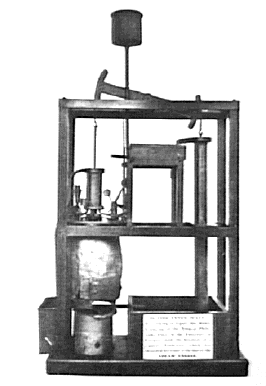James Watt
-1736 - 1819 -

In 1757 James Watt became instrument maker for the University of Glasgow. There he developed his lifelong interest in steam engines. Watt became acquainted with the Newcomen engine when he was repairing the University's model of it.
After careful consideration Watt understood that the Newcomen engine model used too much steam (more than that generated). The steam was being used in reheating the cylinder after each injection of cold water.
Watt wrote:"...the idea came into my mind that, as steam was an elastic body, it would rush into a vacuum, and, if a communication were made between the cylinder and an exhausted vessel, it would rush into it, and might be there condensed without cooling the cylinder.